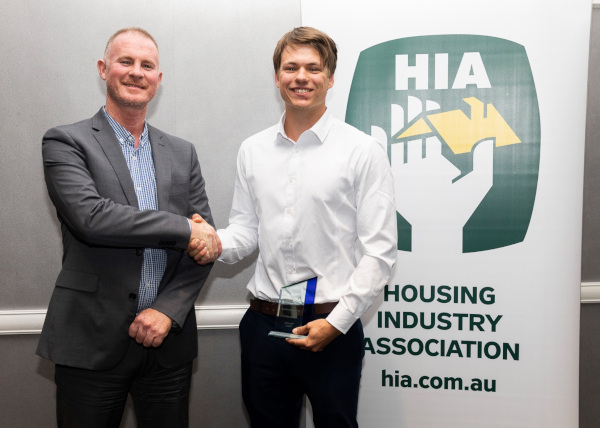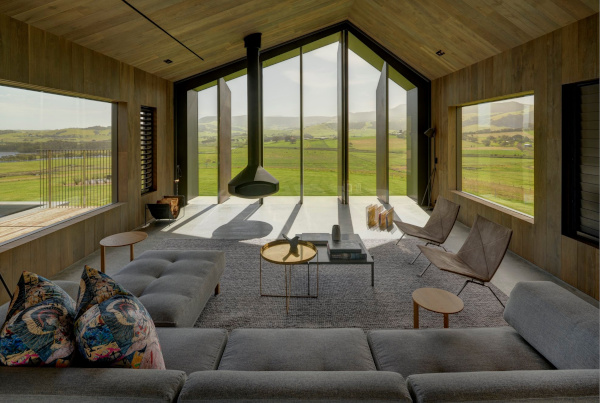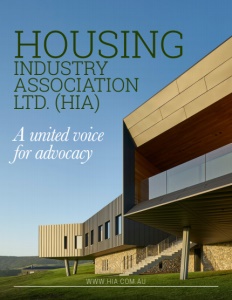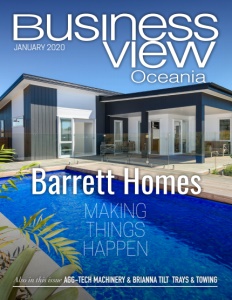Housing Industry Association Ltd. (HIA)
A united voice for advocacy
Business View Oceania interviews Kristin Brookfield, Chief Executive – Industry Policy for Australia’s Housing Industry Association (HIA)
The Housing Industry Association (HIA) is the official body of Australia’s residential building industry. Its primary role involves supporting a membership of 60,000, helping the residential building industry speak with a united voice, and promoting the industry and its services. Headquartered in Canberra, the Association has offices in each capital city, and a number of regional cities. The Association and its members are committed to promoting the highest standards of customer service, workmanship and business conduct.
Business View Oceania spoke with Kristin Brookfield, Chief Executive – Industry Policy for HIA, about the association’s evolution, its current focuses, and the forecast for the future of the residential building industry in Australia. The following is an edited transcript of the conversation.

BVO: Given that you service all of Australia, how does HIA address the regional differences?
Brookfield: “That story begins with the fact that we have an office on the ground in every capital city with staff on hand to assist our members. We also have regional offices. For instance, the New South Wales region is serviced out of our Sydney office, Newcastle, Coffs Harbour and Canberra. This helps us have people within a reasonable distance of our members to provide them with services. And people who know the local lingo. An example of why that’s important would be the planning system. Our home building members are always dealing with local councils and trying to get approvals. Those rules are very state based and even local council based. So we need staff who are experts in their state and that’s who we have in the capital offices. The national building code is primarily the same across the country but we also have specialist building and technical staff in most of our offices to provide that kind of local flavour, as well as the national expertise.
“In the area of networking, we run a variety of member events; ranging from get-togethers for meeting industry peers and learning information through to recognising members’ success with our housing awards program. We also host industry events like economic updates and breakfasts or luncheons with guest speakers across the year. There is always a whole suite of calendar opportunities in the event space.”
BVO: What types of services do you provide?
Brookfield: “The core of HIA is our Member Servicing. Our membership operates small and large businesses and involves residential builders, trade contractors and related professions (building designers, building surveyors, etc.). And we have the manufacturers and suppliers of building products. In doing their business, members come to us for legal advice about contracts between them and their customers industrial relations in terms of awards, pay rates, superannuation, tax obligations and all the employment aspects, which we classify as ‘how you run your business’.
“We have a team of legal staff in our offices who provide advice on the phone and everything is backed up in a digital presence. We then have a group of technical and planning staff. Members can call up and say, “I put these tiles on the floor and this happened… why? And how do I fix it?” they want to know how to get it right. Or they call because the council tells them something has to be done a certain way and they want to check with us about whether it’s the right information and how to do what’s needed. Our staff are experts in the Building Code of Australia and Australian Standards. We have qualified town planners across the country that share the load across the state borders. They provide assistance in dealing with local councils and getting planning approvals.
“Under the second banner are services for offer for a fee. HIA is a Registered Training Organization (RTO) meaning we run accredited training in a small number of building qualifications, and non-accredited training in a range of other useful areas like business skills. HIA has created a number of training courses including the HIA GreenSmart environmental building training course; programs on running your business; dealing with councils and an increasing number of these are available online. We also have a fee-for service opportunity in the work health and safety space with our Safety Services team, and we have HIA Trade Pass where we help a builder to manage all the compliance paperwork for the trade contractors they use.
“The third banner is advocacy. We are a membership association that seeks to work with governments (all nine of them). Governments have ideas, they are changing laws and affecting what our members do in a day-to-day sense. Whether that’s how they build or how they run their business. So we do advocacy across the areas of industrial relations, the planning and building space and the work health and safety space. Our staff that are involved in member servicing are also involved in our advocacy work. My role is to manage the advocacy work by our staff, not only here in Canberra but across the country. Primarily, I’m mindful of the advocacy work we’re doing with governments. The national policy team is 95 percent advocacy and five percent member servicing; whereas the regional offices are 60 / 40, depending on how busy the regions are. What changes year on year are the issues – the topics of the day come and go, and some come back around again.”

BVO: Is the lack of skilled trades an issue for the industry?
Brookfield: “Getting skilled trades is definitely an issue. And getting young people out of school and into the industry. It was difficult 10 to 20 years ago and it’s difficult today for different reasons. There has been generational change and we’re doing what we can to encourage young people and show them it’s an industry they should be interested in. Twenty years ago if you were going through technical colleges, you wouldn’t have had any formal conversation about safety on site. In today’s world safety on site is paramount, and there is specific training for that. You need to make sure you use tools properly, and there’s a lot that flows from it.
“The other issue with bringing young people into the industry is finding hosts who are willing to mentor them and take them on. Because we are a group training organization, if you are a builder you can hire an apprentice from HIA. The Association is the employer; we do all the paperwork for you. All you have to do is pay for the apprentice. That’s another benefit we offer. For the apprenticeships, we approach schools and promote to young people to knock on our door. Each year we do an intake; going through a process of vetting the young people that want to join the scheme and then finding them a host. We’re looking for both employers and employees at the same time and we will partner them up because it’s much better training on an actual worksite than in the classroom. But if we have 1000 kids and only 500 hosts then all our endeavours are made more difficult.”
BVO: What does the landscape look like for the housing industry over the next three to five years?
Brookfield: “Statistics-wise, the housing cycle is coming down the other side of a peak. 2017 was our most recent peak and we built just on 230,000 new homes in all shapes and sizes over a 12-month period. That was a new record. Before that, the biggest peak had been around 170,000 homes. It was a massive shift and the bulk of that increase came from the apartment sector. That’s something else that’s influencing the industry right now. For 2019, our forecast was around 174,000 new homes – a lot of that loss has also been in the apartment sector. Detached houses have sat fairly steadily in the 100,000 to 120,000 range, year on year, during this cycle.
“There are some significant policy items on the agenda in the building code space. We’re having discussions at a national level around changing building laws to increase the stringency of energy efficiency in all new homes. And conversations with government around introducing for the first time some minimum standards for accessibility in every new home in Australia. Those will have a cost impact on new home prices, so it will be an issue to address. The Australian Building Codes Board is looking at 2022 to introduce changes.
“On the legal side, there are a lot of issues that affect the supply chain. Last year the government passed legislation on modern slavery. So companies making $100 million or more will need to make a statement in their annual report about how they are managing their risk of potentially using companies, products, etc. that have slavery in their countries of origin. It’s about a company being more aware of its supply chain. Regarding the Black Economy (the cash economy), there are potential new national rules, including a $10,000 limit on the use of cash for every business in Australia. Whether good or bad, that could have an implication on the way businesses are run.
“Through all this, HIA will continue to be a viable voice for our membership going forward. Offering a range of services that members are able to access, including legal, technical, planning, small business and safety advice. We are here to advocate on behalf of our members for a better working environment for them and the industry overall.”
AT A GLANCE
Housing Industry Association (HIA)
What: The official body of Australia’s home building industry
Where: Based in Canberra, Australia
Website: www.hia.com.au



